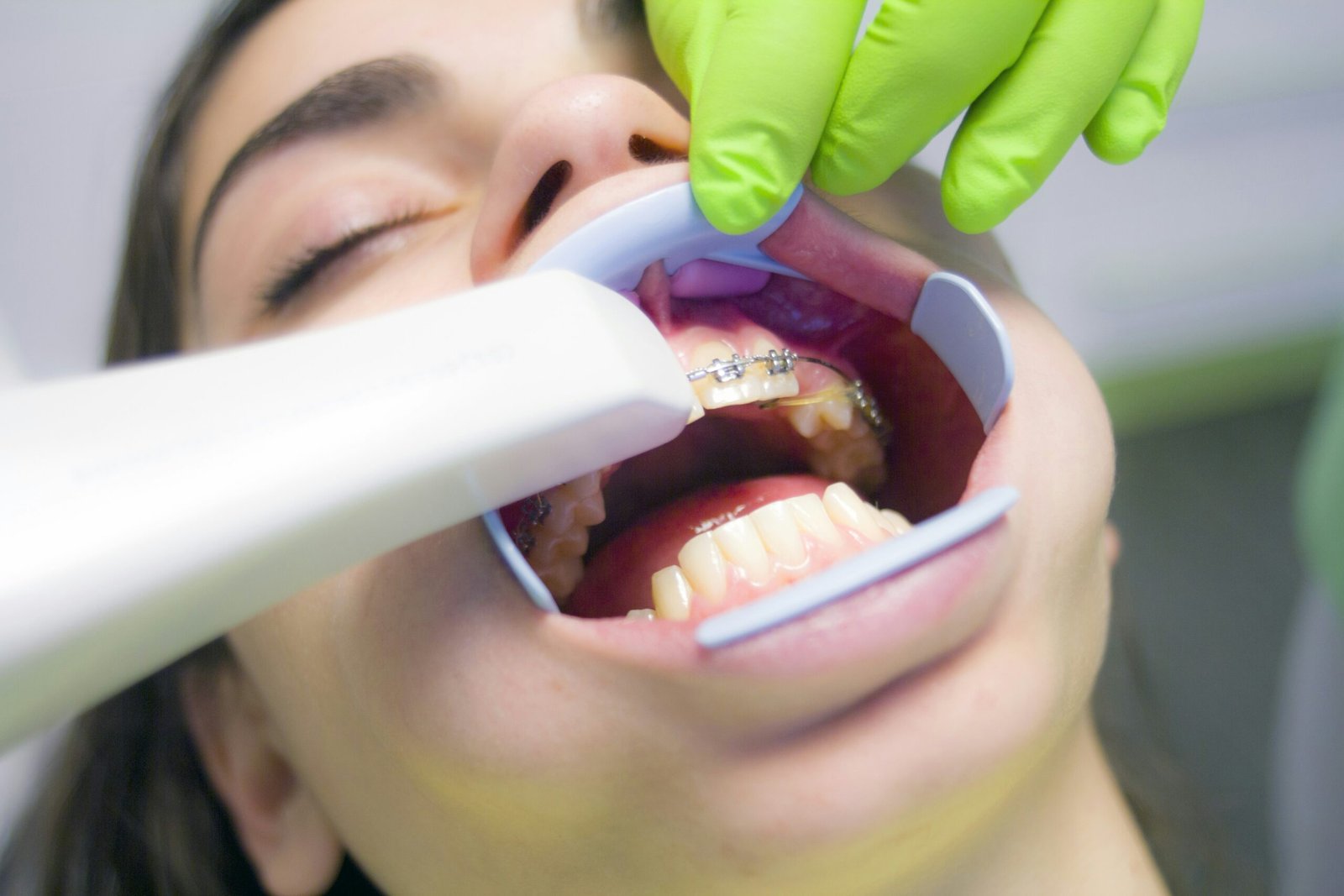Are Dental X-Rays Safe for Children? A Comprehensive Guide
Introduction to Dental X-Rays
Dental X-rays represent a vital component of modern dental care, particularly in pediatric dentistry. These radiographic images are utilized to visualize the internal structures of a child’s mouth, including the teeth, gums, and underlying bone structures. Unlike the visual assessment conducted during regular dental examinations, X-rays allow dental professionals to detect potential issues that may not be apparent visually. This includes cavities between teeth, infections at the root of teeth, or even the alignment of emerging teeth. Given the unique developmental stages children go through, early detection through X-rays can lead to more effective treatment strategies and better overall oral health.
The primary purpose of dental X-rays is to provide a comprehensive view of a child’s dental landscape. They help in planning necessary treatments, monitoring the development of the teeth and jaws, and evaluating the effectiveness of ongoing treatments. Various types of dental X-rays are available—single bitewing X-rays show the upper and lower teeth in one area, while panoramic X-rays provide a broad view of the entire mouth. Each type serves specific diagnostic purposes, thus enabling dentists to tailor their approach to the child’s unique dental health needs.
Nevertheless, it is essential for parents to understand that, while dental X-rays are invaluable, their application raises concerns about radiation exposure, particularly in children. The potential impact of radiation on developing tissues is a valid concern that prompts many parents to question the safety of X-rays. Following this introductory section, we will delve deeper into the safety considerations surrounding dental X-rays for children, outlining best practices and recommendations from dental professionals to ensure that these diagnostic tools are used judiciously and safely.
The Importance of Dental X-Rays in Pediatric Dentistry
Dental X-rays are an essential tool in pediatric dentistry, offering valuable insights into a child’s oral health that cannot be obtained through visual examination alone. They play a pivotal role in monitoring dental development, as children experience rapid changes in their teeth and jaw structures. Through X-ray imaging, dentists can gain a comprehensive view of the positions of developing teeth, the effect of primary teeth on permanent dentition, and the overall health of the jawbone. This early assessment is crucial, particularly in identifying any potential issues that may interfere with proper dental alignment.
One of the primary benefits of dental X-rays in children is their ability to identify cavities at an early stage. Cavities can form beneath the surface of the enamel and may not be visible during a standard dental check-up. By utilizing X-rays, dentists can diagnose decay before it progresses to more serious issues, such as tooth infections or abscesses, ensuring timely and effective interventions. Early detection through dental imaging helps in maintaining optimal dental health in children, allowing for conservative treatments that prevent more invasive procedures later on.
Moreover, dental X-rays are valuable in spotting abnormalities that may indicate developmental disorders or congenital issues, such as missing teeth or extra teeth. Detecting these anomalies early allows for proactive management and treatment planning, which is essential for healthy dental development. Pediatric dentists are trained to determine the appropriate frequency and type of X-rays necessary, ensuring that children receive the care they need while minimizing exposure to radiation. Therefore, understanding the importance of dental X-rays in pediatric dentistry is vital as they significantly contribute to maintaining children’s oral health and overall well-being.
Types of Dental X-Rays
Dental X-rays are essential diagnostic tools used by dentists to assess the oral health of children. These imaging techniques allow for a thorough examination of a child’s teeth, roots, and surrounding bone structure. There are several types of dental X-rays commonly used, each serving a specific purpose.
The first type is the bitewing X-ray. This X-ray technique involves positioning a film or digital sensor between the upper and lower teeth, capturing images of the back teeth. Bitewing X-rays are primarily used to detect cavities and monitor the health of the teeth and bone levels. They are especially valuable for identifying decay that may not be visible during a routine dental exam. Typically, these X-rays are recommended about once a year, depending on the child’s dental health.
Another common type is the periapical X-ray. This imaging technique captures the entire tooth, from the crown to the root, along with the surrounding bone structure. Periapical X-rays are crucial in evaluating problems such as impacted teeth, abscesses, or bone loss. Dentists often take this type of X-ray when there is a need to closely examine the state of a particular tooth or to diagnose specific dental issues.
The panoramic X-ray offers a broad view of the entire mouth in a single image, encompassing all teeth, both upper and lower jaws, as well as surrounding structures. It is particularly useful for treatment planning, as it provides a comprehensive overview that assists in diagnosing orthodontic issues, missing teeth, or developing wisdom teeth. Panoramic X-rays are often employed when initial assessment is required before more detailed examination.
Each of these types of dental X-rays plays a vital role in ensuring children receive appropriate dental care throughout their development. Understanding the purpose and process of each can help alleviate parental concerns and ensure informed decisions regarding their child’s oral health.
Radiation Exposure and Safety
When considering dental X-rays for children, understanding the associated radiation exposure is paramount. Dental X-rays utilize ionizing radiation, but the levels emitted are rigorously controlled and minimized, making them a safe procedure overall. Typically, the amount of radiation received during a dental X-ray is quite low—approximately the same as what one might be exposed to during a full day of natural background radiation. This low dose is especially important when weighing the necessity of the X-ray against its benefits in diagnosing dental issues early on.
To further ensure safety during X-ray procedures, dental practices implement various safety measures. These include the use of lead aprons and thyroid collars that shield vulnerable organs from radiation exposure. Additionally, most modern dental X-ray machines are equipped with advanced technology that focuses the radiation beam more precisely, limiting exposure to only the area of interest. These advancements significantly reduce the overall radiation a child is exposed to during the procedure.
It’s worth noting that the American Dental Association (ADA) and the American Academy of Pediatric Dentistry (AAPD) endorse the use of dental X-rays when clinically indicated, particularly in children. Regular dental assessments, which may involve X-rays, are vital for identifying potential problems before they escalate into serious issues. The judicious use of X-rays aids in monitoring dental development and in detecting cavities or other dental anomalies effectively.
In summary, while the term “radiation” often raises concerns, the risk associated with dental X-rays in children is minimal when best practices and protective measures are followed. Parents can feel confident that this diagnostic tool, when necessary, is safe for their child’s dental health.
Risks and Concerns Regarding X-Rays for Kids
When considering dental X-rays for children, it is essential for parents to examine the associated risks and concerns. One primary apprehension relates to the potential exposure to radiation, which can be particularly concerning for the developing bodies of young patients. It is widely recognized that excessive radiation exposure can have negative health implications, including an increased risk of cancer over a lifetime. However, dental X-rays are performed using very low doses of radiation and are designed to target specific areas of the mouth.
Another concern is the effect of X-rays on developing tissues in children. Children’s cells are more sensitive than adults’, hence the unease regarding the impact on growth and development. Despite these concerns, modern dental radiography techniques, such as digital X-rays, significantly reduce the amount of radiation exposure and are equipped with filters that enhance safety. Additionally, dental professionals routinely prioritize patient safety by using lead aprons and thyroid collars to protect vulnerable areas during these procedures.
It is crucial to acknowledge that while there are inherent risks associated with X-ray exposure, the benefits often outweigh these concerns. Dental X-rays assist in diagnosing potential oral health issues that may not be visible during a regular examination. Early detection of decay, misalignment, or other oral conditions can lead to more effective treatment decisions, preventing more serious complications in the future. Therefore, the use of dental X-rays should be considered on a case-by-case basis, taking into account the child’sindividual needs and the dentist’s professional judgment.
In conclusion, while there are valid risks and concerns regarding dental X-rays for children, advancements in technology and protective measures have significantly mitigated these issues. Parents should engage in open discussions with their dental care providers to weigh the risks against the health benefits of necessary imaging procedures.
When Are Dental X-Rays Necessary for Children?
Dental X-rays are a valuable diagnostic tool that enable dental professionals to evaluate the condition of a child’s teeth, supporting preventive care and early intervention. Generally, the necessity for dental X-rays in children arises under specific circumstances, including age-related assessments, indications of dental issues, and periodic evaluations to maintain overall oral health.
In young children, dental X-rays are often recommended around the age of 4 to 6 years, which coincides with the eruption of permanent teeth. This timing allows dentists to monitor the development of these teeth and spot potential problems such as tooth decay or misalignment. Dental professionals may also opt for X-rays if there are abnormalities observed during a routine examination or if a child presents with persistent dental pain, which could signify underlying issues that a visual examination cannot confirm.
Furthermore, children who are at higher risk for dental cavities or have a history of tooth decay might require more frequent X-rays to track their oral health proactively. For instance, those with special health care needs or limited access to dental care might be monitored with X-rays more often to ensure that emerging issues are managed promptly. Generally, pediatric dentists adhere to guidelines that recommend X-rays should be taken only when necessary, balancing safety with the need for effective treatment.
The American Dental Association suggests that for healthy children, dental X-rays may typically be taken every year to two years. However, individual circumstances may prompt a dentist to recommend X-rays more or less frequently. Ultimately, the decision should always align with the child’s specific dental health needs, ensuring that X-rays are utilized judiciously as part of comprehensive oral care.
Parental Guidance: What to Communicate with Your Dentist
Effective communication between parents and dentists is essential, particularly when it comes to dental X-rays for children. Parents should not hesitate to ask questions about X-ray procedures, ensuring that they understand the rationale behind them. It is crucial to inquire about the necessity of X-rays in your child’s dental care plan. Questions such as, “Are X-rays required for my child’s current dental health status?” and “What information will you obtain from this X-ray?” can help parents assess the importance of the imaging procedure.
A further area of concern is safety. Parents should feel empowered to ask their child’s dentist about the safety measures in place during the X-ray process. Inquiries like, “What protective measures are implemented to minimize radiation exposure?” or “Is lead protection provided for my child?” are critical to ensuring that the dentist prioritizes safety while taking X-rays. Understanding the protective equipment, such as lead aprons or thyroid collars, can alleviate parental apprehensions regarding radiation exposure.
Additionally, it is beneficial to discuss alternative imaging options that may be available. Asking questions like, “Are there any alternatives to traditional X-rays that can provide similar diagnostic results?” can open up a dialogue about the use of advanced imaging techniques, such as digital X-rays, which emit significantly less radiation. Furthermore, parents should explore whether there are specific times or circumstances under which X-rays are particularly recommended. For instance, if a child has a high risk of dental cavities, X-rays might be deemed essential for effective monitoring.
Overall, fostering open communication with your child’s dentist not only enhances trust but also aids in informed decision-making about the use of dental X-rays. Being proactive about questions and concerns empowers parents to advocate for their child’s health and safety effectively.
Alternatives to Traditional X-Rays
In recent years, advancements in dental imaging technology have provided alternatives to traditional dental X-rays, offering various benefits and potential drawbacks. One significant alternative is digital X-rays, which utilize electronic sensors instead of film. These digital images can be enhanced, stored, and transferred easily, making it a preferred option for many dental practitioners. Additionally, digital X-rays expose patients to significantly lower radiation levels compared to conventional radiography, thus enhancing safety, particularly for children.
Another innovative imaging technique is cone-beam computed tomography (CBCT). This method generates detailed three-dimensional images of the dental structures, soft tissues, and even the airway. CBCT is especially useful for complex cases, such as orthodontic treatment planning, dental implant placements, and the evaluation of jaw disorders. While this technology provides a comprehensive view of the oral cavity, it does come with higher radiation exposure than standard digital X-rays. Therefore, practitioners must weigh the benefits against the increased radiation risk, particularly for young patients.
Moreover, alternatives such as ultrasonography and magnetic resonance imaging (MRI) are also gaining traction in dentistry. Ultrasonography, although less common in dental settings, uses sound waves to produce images and does not expose patients to radiation. However, its application may be limited to specific scenarios, such as the evaluation of soft tissue pathology. On the other hand, MRI provides excellent soft tissue imaging but is less effective for hard-tissue assessment, making it a secondary option in most dental evaluations.
Ultimately, the choice of imaging should consider factors such as diagnostic requirements, radiation exposure, and patient safety, particularly for children. As dental technology continues to evolve, practitioners are better equipped to select the most appropriate and safest imaging method tailored to individual patient needs.
Conclusion: Weighing the Benefits and Risks of Dental X-Rays for Children
In assessing the safety of dental X-rays for children, it is critical to consider both the advantages and potential risks associated with this diagnostic tool. Dental X-rays play an essential role in comprehensive oral health assessments for young patients, enabling dental professionals to detect problems that may not be visible during a routine examination. These issues can include cavities, bone loss, and abnormalities in tooth and jaw development. Early detection through X-rays can facilitate timely interventions, which may prevent the progression of dental issues and ultimately lead to better oral health outcomes.
While there are undeniable benefits to conducting dental X-rays, it is also important to address the concerns parents may have regarding the exposure to radiation. Modern dental X-ray technology has significantly reduced radiation levels, making these procedures comparatively safe, especially when appropriate protocols are followed. The use of protective lead aprons and thyroid collars is standard practice, further minimizing potential risks. Additionally, dental practitioners evaluate each child’s circumstances to determine the necessity and frequency of X-ray examinations, ensuring that children receive care tailored to their specific needs.
Open communication with dental professionals is paramount in alleviating concerns regarding dental X-rays for children. Parents are encouraged to discuss their apprehensions and seek clarification on the applications of X-rays in their child’s treatment plan. By actively engaging with the dental team, parents can make informed decisions about their child’s oral health, balancing the necessity of X-rays against any apprehensive feelings surrounding the procedure. As such, understanding the role of dental X-rays in maintaining children’s oral health through careful assessment is essential for fostering a positive approach to pediatric dental care.





